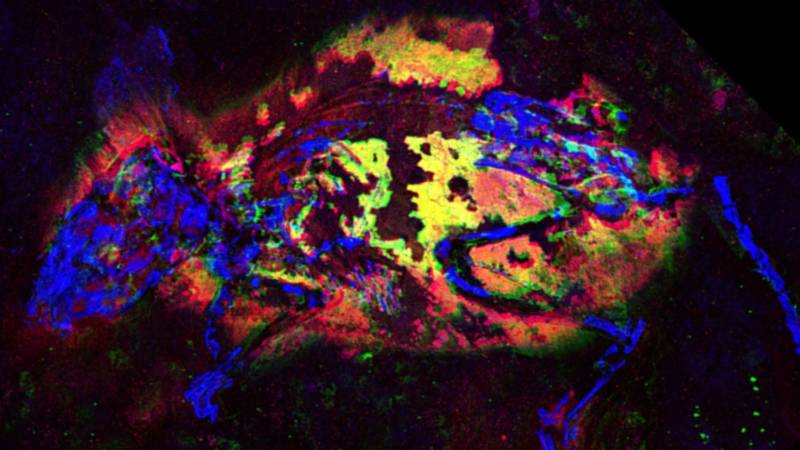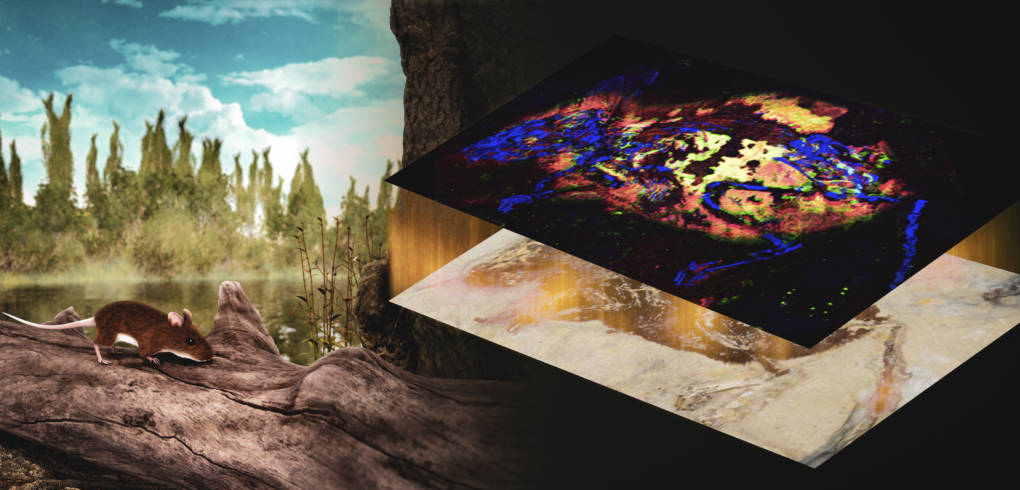Scientists can now “see” more accurately what long-extinct species looked like.
Researchers from the SLAC National Accelerator Laboratory in Menlo Park and the University of Manchester have created a chemical image of a 3-million year-old mouse, published Tuesday in Nature Communications.
The mouse doesn’t look too different from those scurrying around today. The major discovery was its coloring: It had red fur and a white stomach.
“Paleontology has concerned itself with what you can see with your naked eye,” said Nick Edwards, a SLAC researcher and co-author of the paper. “That was all we had as a tool for many years, decades even.”
But now, using X-ray fluorescence imaging, researchers can map elements like zinc and sulfur that function as color markers. Elements have a unique amount of energy, or wavelength, they emit when bombarded with light. Based on the location of those elements in fossils, scientists can reconstruct the animal’s coloring in real life.

